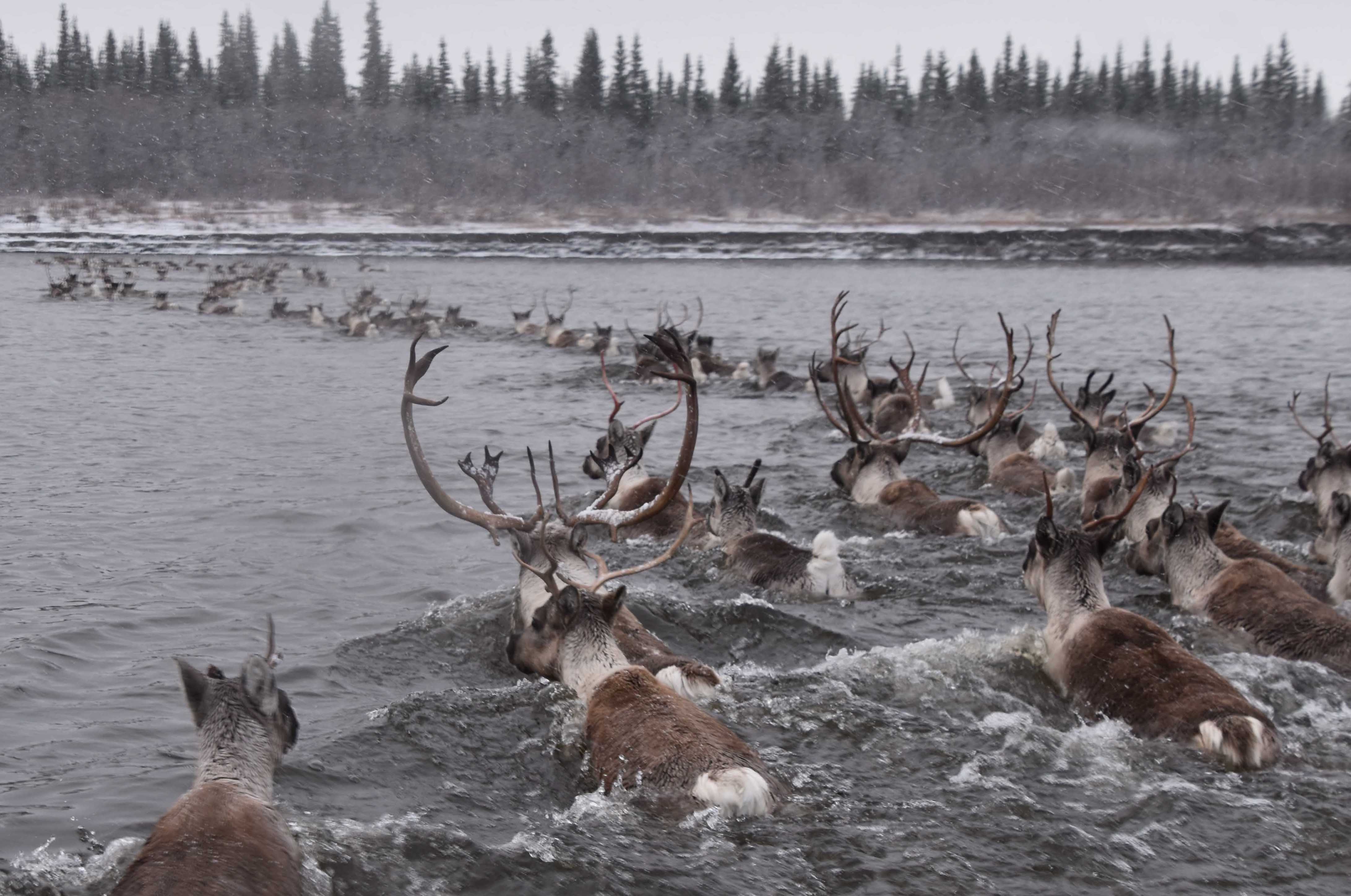Caribou migrate farther than any terrestrial animal. They can cover thousands of miles as they move between winter feeding grounds and summer calving grounds. But many caribou herds are in decline as the warming climate changes much of the landscape they depend on. Inedible shrubs are rapidly encroaching on the tundra, and more frequent forest fires and disease are destroying the trees that provide caribou with lichen for food. The role of climate on their migration patterns has never been well understood, but knowing what drives caribou movements is crucial to predicting the future for the iconic species that plays a key roll the ecological and economic stability of the Arctic region.
A new study led by a University of Maryland biologist discovered two unexpected drivers for migration timing that dispute long-held assumptions and provide insight into potential future effects of climate change on caribou. First, the study found that caribou herds all across North America are triggered to start spring migration at roughly the same time by large-scale, ocean-driven climate cycles. Second, despite a synchronized start, arrival at their respective calving grounds depends on the previous summer’s weather conditions. Warm, windless summers that favored insect pests lead to poorer maternal health and delayed arrivals at the calving grounds the following spring.
The study, which accounted for approximately 80% of all North American migratory caribou, is the largest caribou migration study to date. It was published in the December 12, 2019 issue of the journal Ecosphere.
“This was completely unexpected,” said Eliezer Gurarie, an associate research scientist in UMD’s Department of Biology and lead author of the study. “There was no reason to think that herds that calve near the Hudson Bay in the East would begin migration at the same time as the herds along coastal Western Alaska, or that summer conditions would play an important role in the following spring migration. Prior to this, it had been assumed that migration timing depends on some combination of snowmelt and availability of useful vegetation at the endpoint of the migration. Neither of those held up.”
Continue reading at University of Maryland
Image via University of Maryland


